Review Summary
Expert Rating
Vivo V19 finally launched in India last week after several delays due to the coronavirus lockdown. The smartphone succeeds the Vivo V17 that launched just a few months ago in December. This means that the V19 comes just five months after its predecessor, but Vivo feels it has offered enough upgrades in the new model to justify its existence. In our Vivo V19 review, we take a look at whether the phone is in fact a worthy successor, and if it justifies its price tag of Rs 27,900.
The Vivo V19 does look more expensive than one would have expected given its specifications. The main issue here is the chipset, which is the Snapdragon 712. But when it comes to everything else, the Vivo V19 offers a pretty solid spec sheet that includes a 6.44-inch FHD+ AMOLED display, 3D glass body, 48MP quad cameras, and 33W fast charging support.
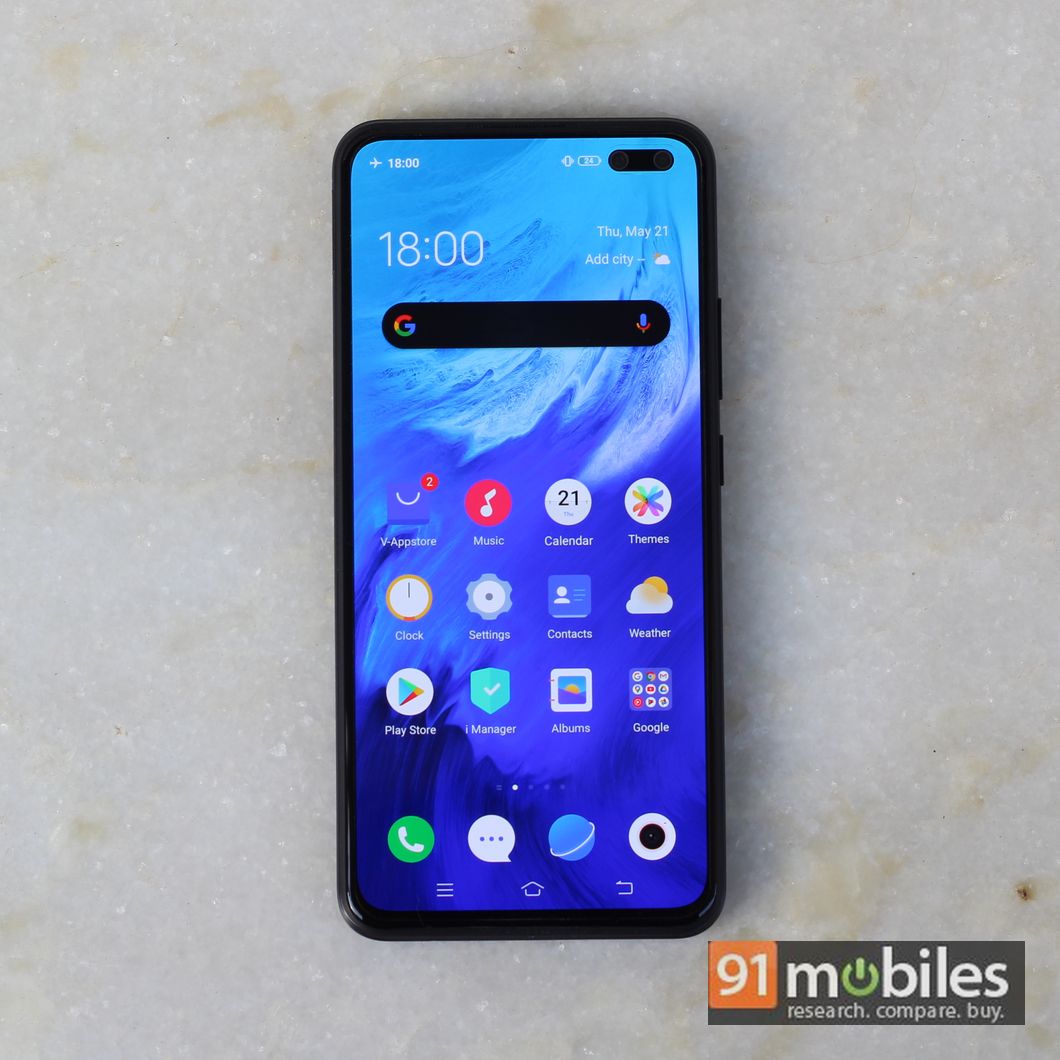
Verdict
The Vivo V19 is one of the better-looking phones in its segment, offering an attractive glass design and a bright and sharp AMOLED display. The all-day battery life and speedy 33W fast charging are appreciated as well. When it comes down to performance, it is decent, but we have seen better performances from lower-priced phones.
Design and display
There’s no denying the Vivo V19 is a pretty smartphone. It offers great ergonomics with the 3D curved glass back panel. The phone is wonderfully compact despite a sizable 6.44-inch display. Thanks to the slim bezels around the screen, the company has managed to keep it down to a handy size. Moreover, its weight at just 186.5 grams makes it quite lightweight as well. The power and volume buttons on the right side offer a nice tactile feel. Overall, it’s a phone that you can easily work with using one hand.
The Vivo V19 comes in Mystic Silver and Piano black colours. We received the black unit, which isn’t pure black, but more of a very deep blue shade. The front and back are protected by Gorilla Glass 6, which is great. During our review, we didn’t notice many smudges or scruffs on the panel and the phone held up pretty well to daily use, but then again that’s hardly a surprise when you’re in quarantine.
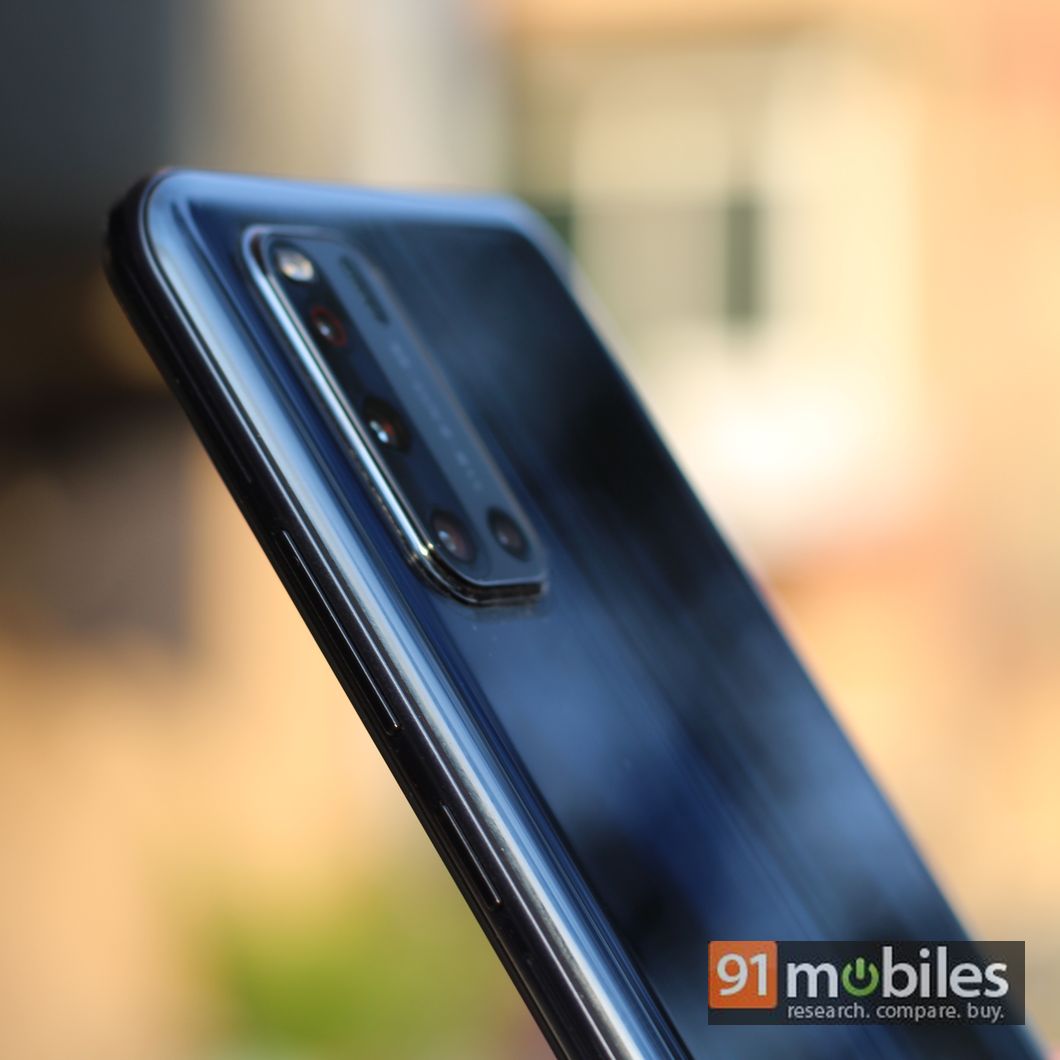
You get an in-display fingerprinting sensor, which is pretty quick to scan and unlock the phone. The phone gets a 3.5mm headphone jack on the bottom and you also get a pair of wired earphones in the box, which is nice to see. There’s a Type-C port and a single speaker on the bottom as well. The V19 gets a triple card slot that supports two nano SIM cards and a microSD card.
Coming to the display, you get a 6.44-inch FHD+ AMOLED display made from E3 OLED. The display supports HDR 10 standard, DCI-P3 color gamut and 800 nits peak brightness. It also supports Widevine L1, which will allow you to stream content on platforms like Netflix and Prime Video in full HD resolution. The screen offers vibrant colours by default, which you can tone down in Settings. Text appears sharp and viewing angles are great.
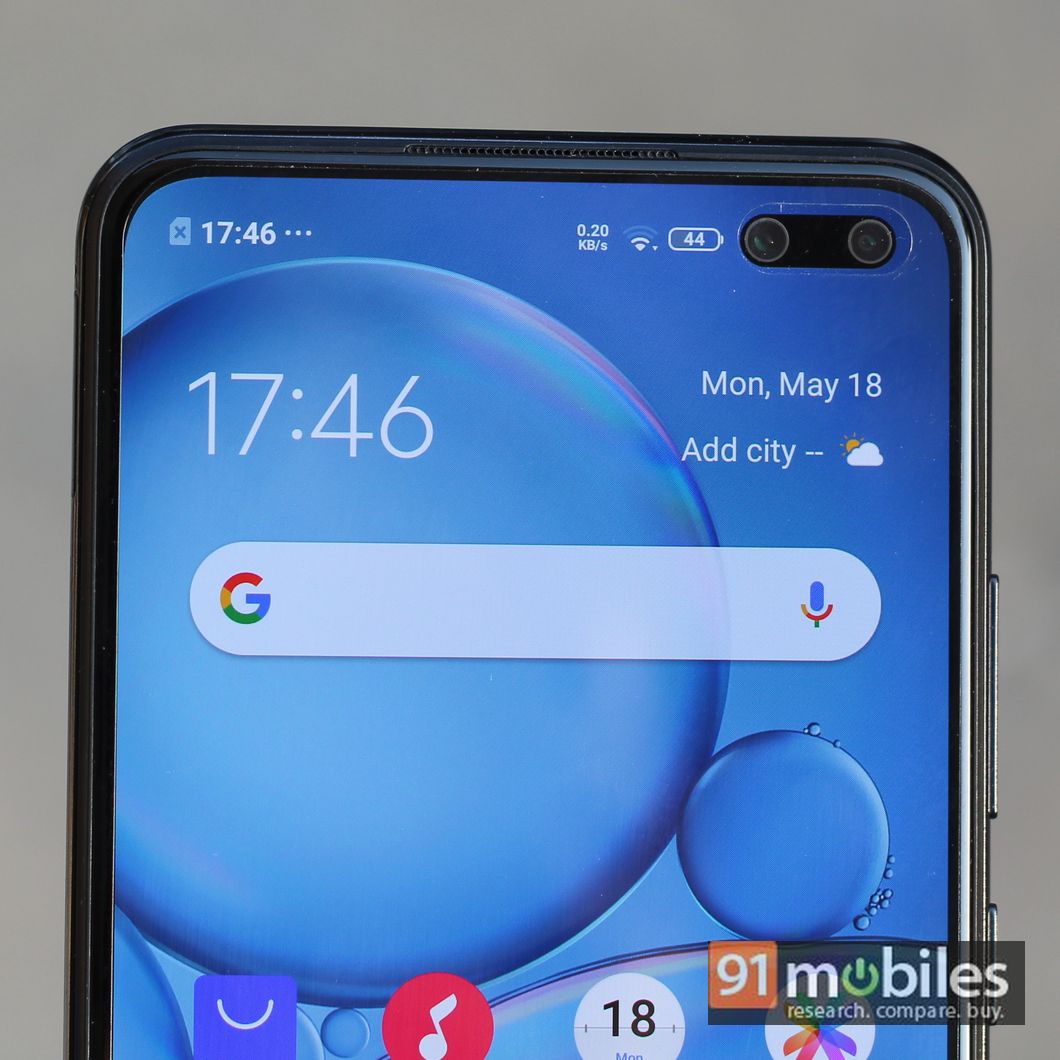
We watched a few episodes of ‘Upload’ with all its science fiction dazzle on Prime Video in 1080p and found the quality to be crisp with sharp images and rich colours. The dual punch-hole cutout on the top right corner is easy to ignore while watching content, but you might notice it while playing games in landscape mode. The screen also offers ample brightness, so you won’t have any trouble reading it outdoors under peak sunlight.
Cameras
The Vivo V19 comes with four cameras on the back and two cameras up front for a total of six cameras. The company is clearly trying to emphasise the phone’s camera prowess by offering a variety of ways to capture photos. The quad camera setup includes a 48MP f/1.79 main sensor, an 8MP wide-angle lens, a 2MP macro lens and a 2MP depth sensor. The dual selfie camera setup includes a 32MP main camera and an 8MP wide-angle lens. The camera app is easy to use and swiping through the various modes felt smooth and simple. There is an option next to the shutter button to switch between regular, macro and wide-angle modes, which is convenient. The camera app also offers modes like night, portrait, Live Photo, pro, Jovi Vision, and the ability to shoot in full 48MP.
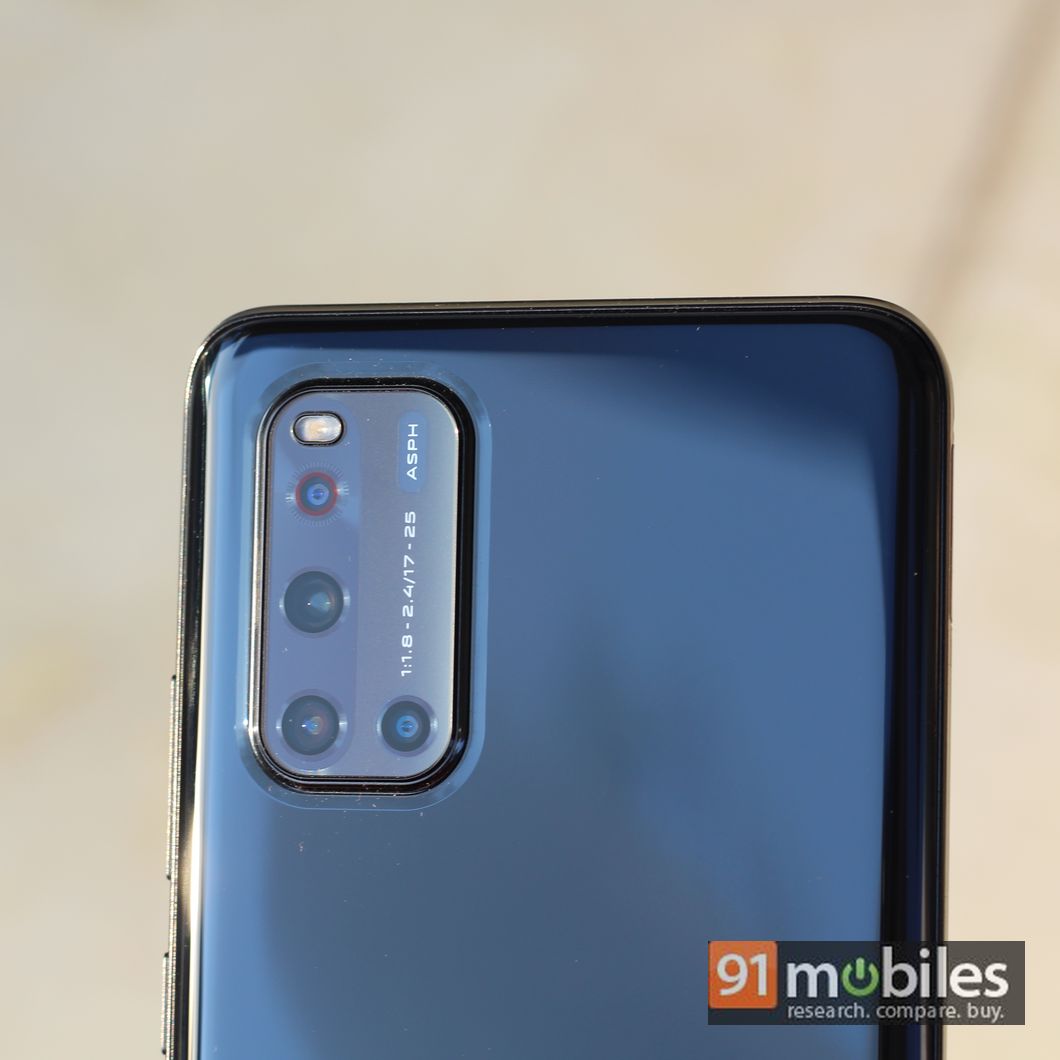
The main camera is able to allow in plenty of light to capture bright and clear photos. Colours look punchy and saturated if your screen is set to vivid mode. A general landscape shot will typically offer a good balance between highlights and shadows. The dynamic range is decent in tricky lighting scenarios, but we found the Samsung Galaxy A71 to offer better HDR photos. We also preferred the Samsung Galaxy A71’s daylight photos for contrast and colour reproduction. Additionally, you can shoot in full 48MP as well, but it won’t support HDR and photos often look duller than the 12MP binned ones.
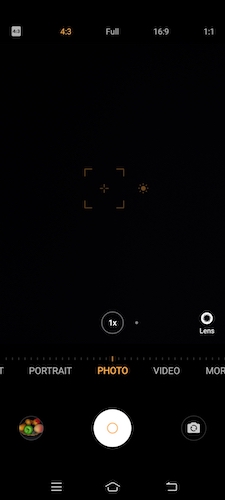
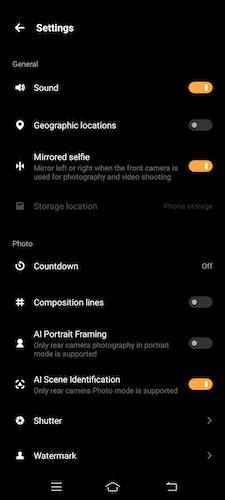
Wide-angle photos also looked decent with plenty of light around, but they expectedly lack detail. The same goes for the macro camera. We were able to capture some attractive close up shots that look good as long as you don’t zoom into them. Both these cameras are best used in broad daylight as they don’t offer much in terms of detailing and get progressively worse indoors and generally unusable under low light.
The 32MP front camera delivers some crisp and detailed selfies in daylight. You can zoom in on these photos and still see a good amount of detailing. The colour reproduction is on point and you can disable beauty mode to get more true-to-life selfies with all the natural pores. Again, the quality of selfies takes a major hit indoors and in low light as as photos come out noisy and soft. The accompanying 8MP wide-angle camera can come in handy for large group selfies, but will not offer as much sharpness as the main camera.
The Vivo V19’s night mode is able to reduce noise levels and graininess in low-light conditions. You’ll be able to capture brighter and clearer photos at night using this mode, but don’t expect the results to be substantially better than the regular mode. The bokeh mode lets you adjust the intensity of background blur and it works for both the rear and front camera. Bokehs aren’t the best as there is some visible blurring of the subject as well in many scenarios.
Performance and software
The Vivo V19 is powered by the 2.3GHz Snapdragon 712 chipset, which is a 10nm octa-core that was launched in early 2019. This might put off some people who know that there are more powerful chipsets to be found in this segment such as the Snapdragon 855-powered Redmi K20 Pro or the Snapdragon 855 Plus-powered Realme X2 Pro. Talking about benchmark numbers, the Vivo V19 Geekbench 5 scores were 412 for single-core and 1600 in multi-core, which are higher than the Exynos 9611-powered Samsung Galaxy A51, but much lower than what the Realme X2 Pro scored.
That being said, when it comes to real world usage, the Snapdragon 712 SoC holds up pretty well. You won’t get blazing fast speeds here, but you won’t find the Vivo V19 slow either. The phone comfortably handles day-to-day tasks without any lags, and switching between multiple apps to multitask was smooth as well, which is expected from a phone that packs 8GB of RAM. In fact, we found the Vivo V19 doesn’t kill apps easily and retains them in memory, including heavy gaming apps like PUBG. The Snapdragon 712 chipset can also run games like PUBG and Asphalt 9 in high graphics settings.
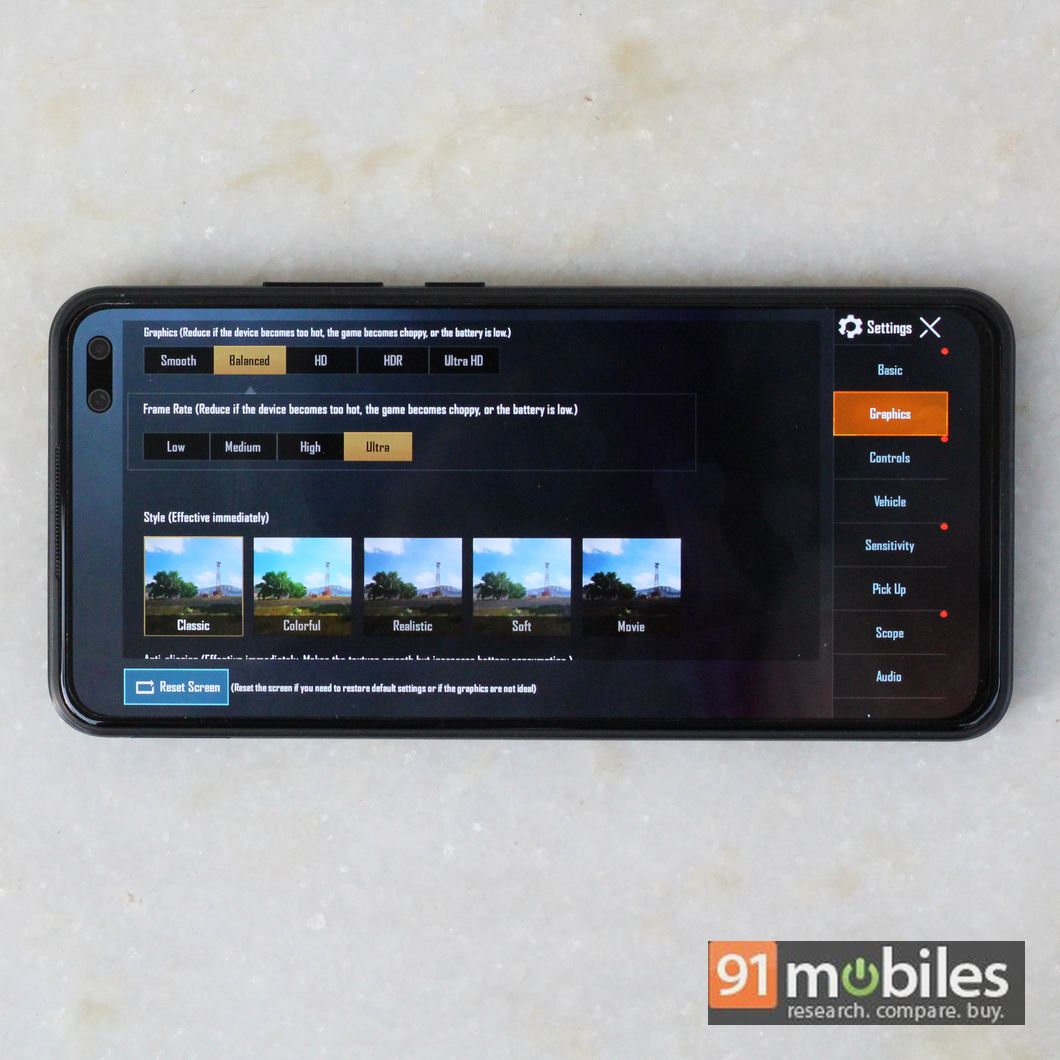
The Vivo V19 handles games quite well. We could plant PUBG in Balanced + Ultra graphics, which was mostly smooth and clear throughout a 30-minute session. Notably, the phone barely got warm during gameplay and this helped reduce battery drain. After a 30-minute session, the battery dropped by 7-8 percent, which is pretty good.
Coming to the software, the Vivo V19 runs Funtouch OS 10 on top on Android 10. The UI has some bloatware, including a few pre-loaded third-party apps like DailyHunt, Amazon, Flipkart and so on. It’s not as bloated as some other custom skins, but some pre-loaded apps and native Vivo apps can send spammy messages that you can disable via Settings. Funtouch OS 10 is easy enough to get used to once you clean up the home screen. You can uninstall some preloaded apps, add an app drawer via Settings and remove the apps on the home screen for a cleaner look. Swiping right on the screen will take you to Smart Launcher, which offers shortcuts to frequently used apps. Smart Launcher is preset with cards for Hot Games, Hot Apps, and News from Vivo’s custom browser, but you can change the cards to Weather, To-do List and so on as per your taste.
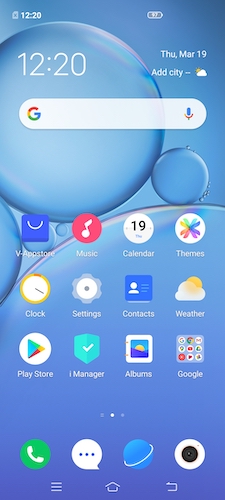
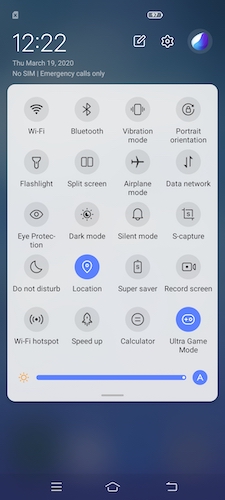
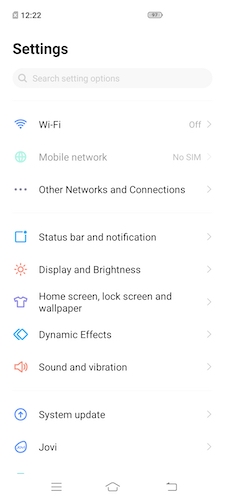
You can swipe down from the top of the screen to bring up quick actions and notifications. Funtouch OS includes system-wide dark mode, which offers deep blacks on the Vivo V19’s AMOLED display. The software also comes with features like Digital Wellbeing to help you keep a tab on how much time you spend on apps. During our review, the V19 was updated to the April security patch, but did not receive the May security patch, so it will be interesting to see how frequently the device will be receiving software updates.
Battery
Vivo V19 packs a 4,500mAh battery, which is good enough for full day usage on a single charge if you’re someone who loves to play a lot of games and browse on social media throughout the day. On days with moderate usage, the phone should last a little over a day. The phone comes bundled with a 33W fast charger that takes around 75 minutes to charge the device from zero to 100 percent.
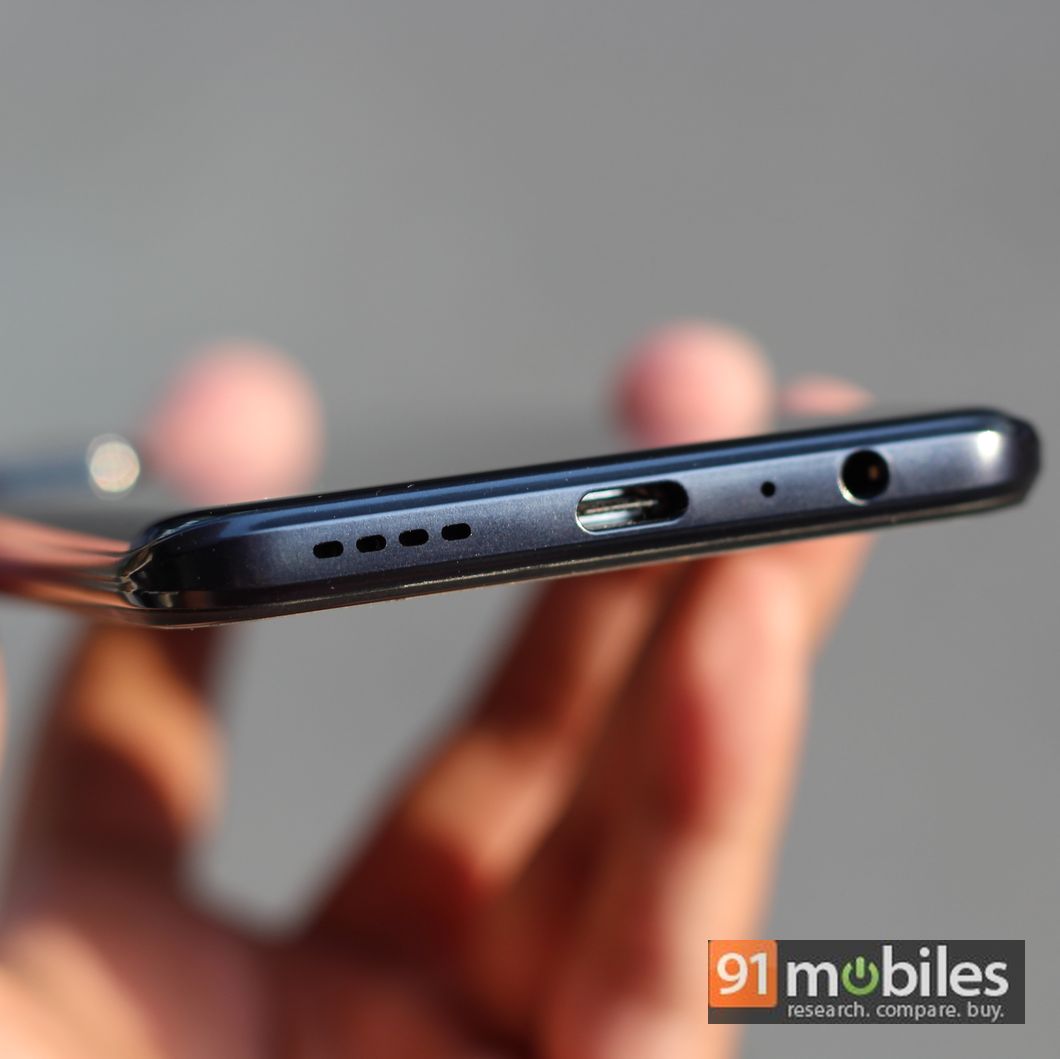
Final verdict
The Vivo V19 is a pretty solid mid-range smartphone that ticks all the boxes in terms of design, display and performance. It’s a phone that should deliver a consistently smooth user experience. However, this might not be the one for you if you’re looking for a long-term smartphone since the Snapdragon 712 chipset may not age as well as a Snapdragon 855 SoC or a newer mid-range chipset like the Snapdragon 730G chipset would.
Vivo V19 is a very attractive phone thanks to its glass design and AMOLED display. The cameras are decent, but not the best you will find in this segment. Had the price been a few notches lower, the Vivo V19 would have been easy to recommend. However, the phone finds itself among the Redmi K20 Pro and Realme X2 Pro, both of which offer flagship-grade performance in pretty much all aspects.
Editor’s rating: 3.5 / 5
Pros
- Attractive design
- Vivid AMOLED display
- Good selfie camera
Cons
- Processor not best in the segment
- Software comes with bloatware
- Price could have been better
 | Rs. 24,990.00 | Go To Store |

























![[Exclusive] iQOO is evaluating launch of gaming tablet in India Thumbnail](https://www.91-cdn.com/hub/wp-content/uploads/2024/04/Vivo-Pad-3-Pro-as-iQOO-Pad-2.png?tr=h-110,q-100,pr-true)
![[Update] Vivo V30e India launch date announced; key specifications and features revealed Thumbnail](https://www.91-cdn.com/hub/wp-content/uploads/2024/04/Vivo-V30e.jpg?tr=h-110,q-100,pr-true)






